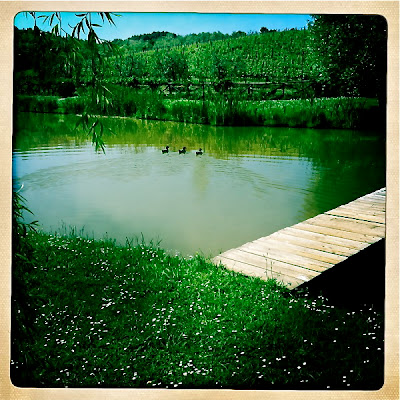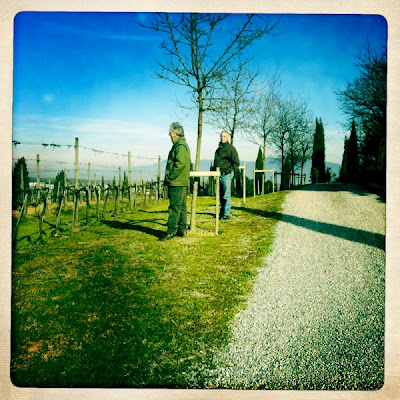ANOTHER ITALIAN TALE: The love and the CHIANTI
I am going to Chianti! I’m sipping Chianti! Chianti wine tasting… Chianti love tour… Chianti grapes… Chianti on a bicycle… A Chianti Experience
Is Chianti a place? Is Chianti a name for a wine? Is Chianti a grape variety? Is Chianti a glass of Love?
WHAT THE HELL IS CHIANTI?
Nowadays, Chianti is a red Italian wine produced in the Chianti area of Tuscany.
ONCE UPON A TIME…
…In the thirteenth century, viticulture was known to flourish in the “Chianti Mountains” around Florence. The merchants in the nearby villages of Castellina, Gaiole and Radda formed the Lega del Chianti to produce and promote the local wine.
In 1398, records note that the earliest embodiment of Chianti was, believe it or not, a white wine!
In 1716, Cosimo III de’ Medici, Grand Duke of Tuscany, issued an edict legislating that the three villages of the Lega del Chianti, as well as the village of Greve and a 2-mile hillside north of Greve as the only officially recognized producers of Chianti.
By the eighteenth century, Chianti was widely recognized as a red wine, but the exact composition and grape varieties used to make Chianti at this point is unknown. Sangiovese? For sure! And what else? Canaiolo? Mammolo? Marzemino? Who knows!
Nearly 150 years later, in the 1860s, Bettino Ricasoli (later Prime Minister in the Kingdom of Italy) created the recipe of Chianti as a Sangiovese based wine. This new recipe called for: 70% Sangiovese, 15% Canaiolo, 10% Malvasia (later amended to include Trebbiano) and 5% other local red varieties.
In the 1930s, subsequent expansions throughout the twentieth century would eventually bring the Chianti zone to cover almost all of Tuscany. The original zone established by the edict of Cosimo III de’ Medici would eventually be considered the heart of the Chianti Classico region.
In 1967, the Denominazione di origine controllata (DOC) regulation set by the Italian government firmly established the “Ricasoli formula” of a Sangiovese-based blend with 10-30% Malvasia and Trebbiano.
By the late twentieth century, a group of ambitious producers began working outside the boundaries of DOC regulations to make what they believed would be a higher quality style of Chianti. These wines eventually became known as the “Super Tuscans.” Many of the producers behind the Super Tuscan movement were originally Chianti producers who rebelled against what they felt were antiquated DOC regulations. Some of these producers wanted to make Chiantis that were 100% Sangiovese. Others wanted the flexibility to experiment with blending French grape varieties such as Cabernet Sauvignon and Merlot or to not be required to blend in any white grape varieties.
Since 1996, the blend for Chianti and Chianti Classico has been 75-100% Sangiovese, up to 10% Canaiolo and sometimes up to 20% of any other approved red grape variety such as Cabernet Sauvignon, Merlot or Syrah. Since 2006, the use of white grape varieties (such as Malvasia and Trebbiano) have been prohibited in Chianti Classico.
Nowadays: The Chianti region covers a vast area of Tuscany and includes within its boundaries several overlapping regions. Other well known Sangiovese-based Tuscan wines such as Brunello di Montalcino and Vino Nobile di Montepulciano could be bottled and labeled under the most basic designation of “Chianti” if their producers chose to do so. Yet they don’t, they prefer to remain distinguishable so they can sell Brunello for more!
THE CHIANTI AREA
The Chianti DOCG (Denominazione di origine controllata e garantita) covers all the Chianti wine and includes a large stretch of land encompassing the western reaches of the province of Pisa, the Florentine hills in the province of Florence, to the province of Arezzo and Siena. Within this regions are vineyards that overlap the DOCG regions of Brunello di Montalcino, Vino Nobile di Montepulciano and Vernaccia di San Gimignano. Any Sangiovese-based wine made according to the Chianti guidelines from these vineyards can be labeled and marked under the basic Chianti DOCG should the producer wish to use the designation.
Cherry, plum and raspberry… WHAT SHOULD WE EXPECT WHEN SIPPING A GLASS OF CHIANTI?
Chianti Classico wines tend to be medium-bodied with medium-high to high acidity. Floral, cherry and light nutty hints are characteristic aromas, expressing more notes on the mid-palate and finish than at the front of the mouth. Chianti Classico wines are characterized in their youth by their predominantly floral and cinnamon spicy bouquet. As the wine ages, aromas of tobacco and leather can emerge. Chiantis tend to have medium-high acidity and medium tannins. The acidity in the wines make them very versatile, particularly with Italian cuisines that feature red sauce, as well with as beef, lamb; and, why not, with pizza and seafood. Basic level Chianti is often characterized by its juicy fruit notes of cherry, plum and raspberry and can range from simple quaffing wines to those approaching the level of Chianti Classico. Well-made examples of Chianti Classico often have the potential to age and improve in the bottle for six to twenty years.
MANY WORDS FOR CHIANTI… WHAT DO THEY MEAN?
Chianti Classico must have a minimum alcohol level of at least 12% with a minimum of 7 months aging in oak, while
Chianti Classico riserva must be aged at least 27 months at the winery with a minimum alcohol level of at least 12.5%.
Chianti Riserva: Aged Chianti (38 months) may be labeled as Riserva.
Chianti Superiore: Chianti that meets more stringent requirements (lower yield, higher alcohol content and dry extract) may be labeled as Chianti Superiore, although Chianti from the “Classico” sub-area is not allowed in any event to be labeled as “Superiore”.
Chianti Gallo Nero: A Chianti may have a picture of a black rooster (known in Italian as a Gallo Nero) on the neck of the bottle, which indicates that the producer of the wine is a member of the Gallo Nero Consortium, an association of producers of the Classico sub-area sharing marketing costs. Since 2005 the black rooster has been the emblem of the Chianti Classico producers association.
DID WE KNOW THAT…?
Chianti was historically associated with that squat, funny bottle dressed with a straw basket, called a “fiasco.” The name “fiasco” comes from an unsuccessful attempt (a fiasco, indeed) to craft a traditionally shaped bottle. Because of that “mistake” the bottle didn’t have the desired shape and couldn’t stand on its own. The straw basket was needed to make the bottle stand vertically.
This is not the only example in history of a “mistake” that becomes a “legend!” Never underestimate the greatness of great mistakes!!!
fonte:
pappalecco





















































